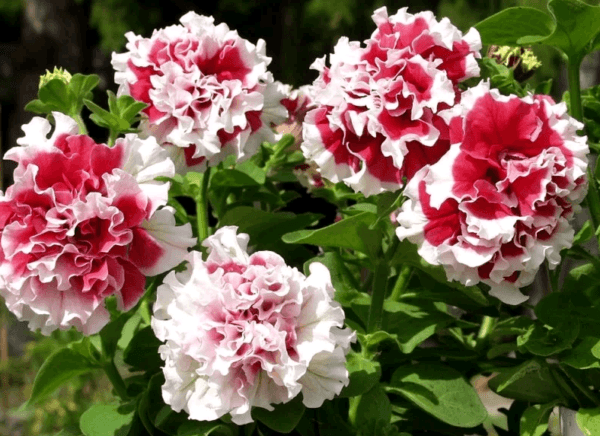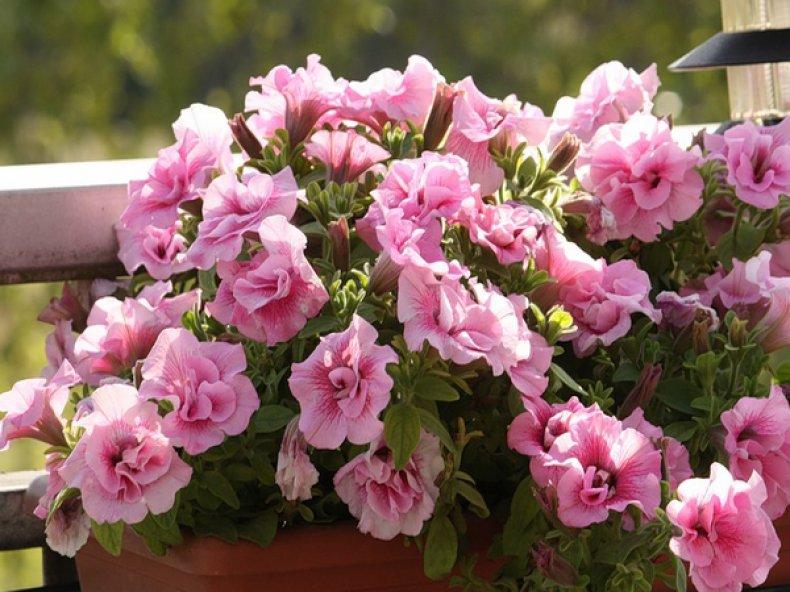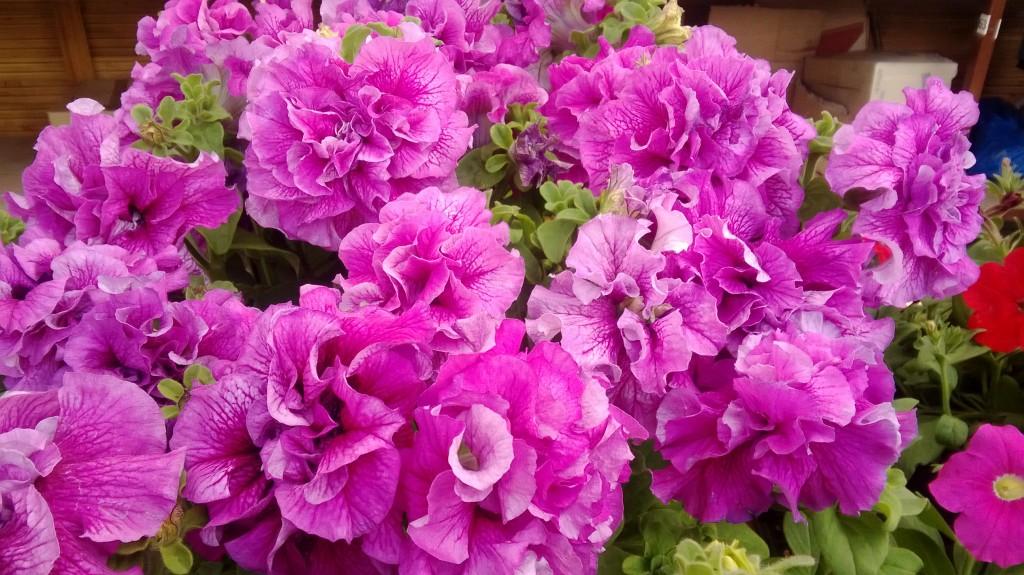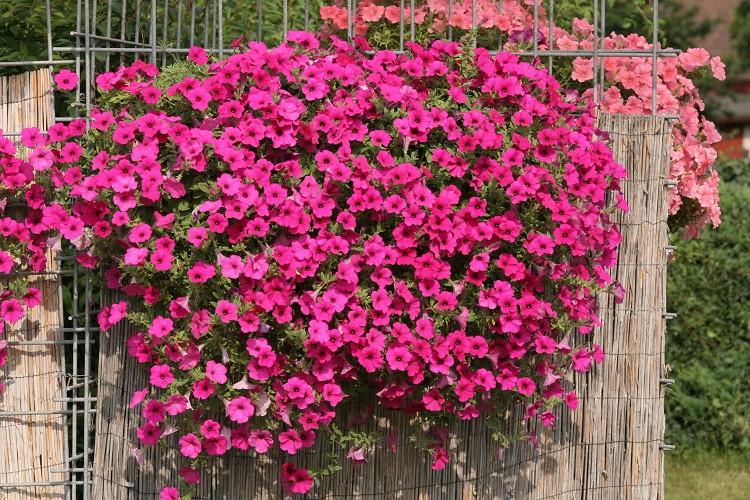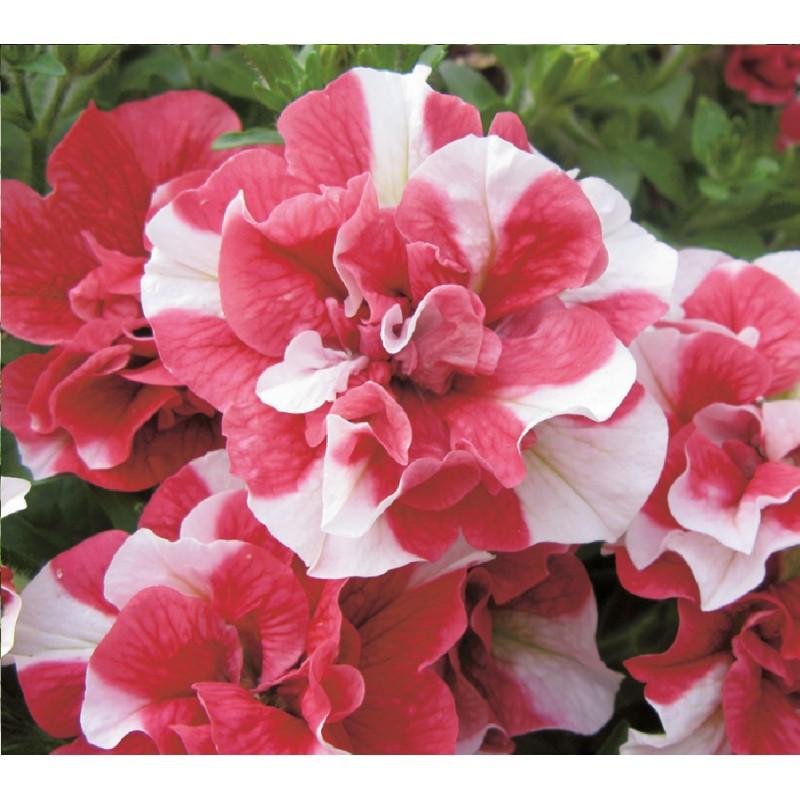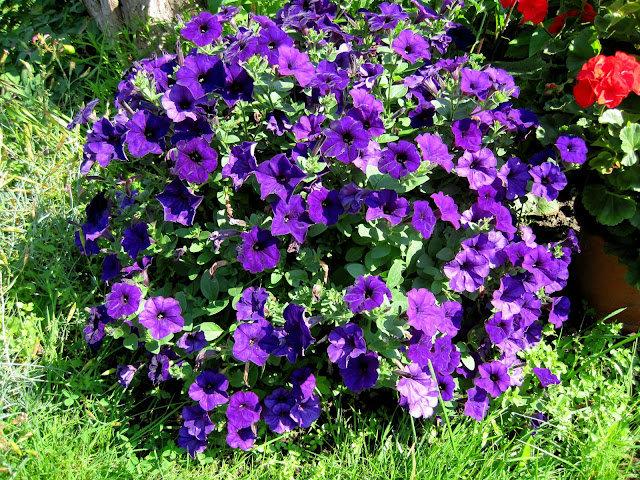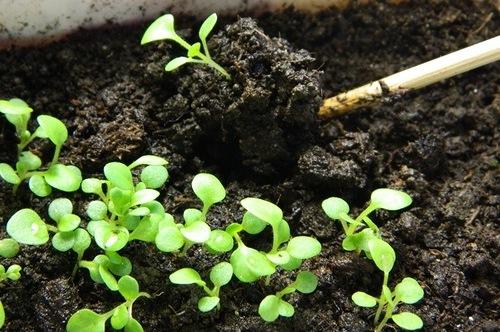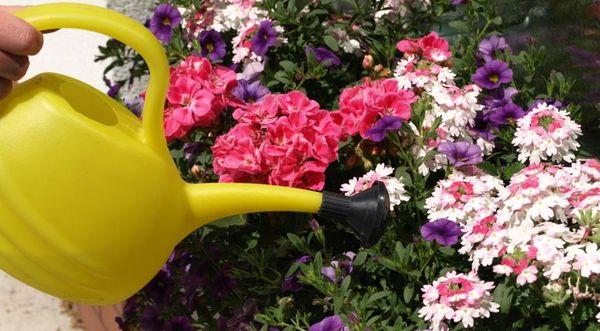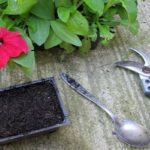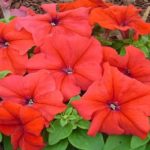Garden decoration - bright and beautiful flower beds. Planting flowers is a favorite and important task for a gardener. Terry petunias are unpretentious plants. Anyone can grow them. It is enough to properly care for them, and the flowers will delight you with a riot of colors and abundant flowering.
- Terry petunia: biological description of the variety
- Variety of varieties
- Common varieties
- Double Cascade
- Double Cascade Blue
- Duo
- Duo Burgundy
- Terry grandiflora
- Pirouette
- Pirouette Rose
- Pirouette Parple
- Valentina
- Double Madness Blue
- F1 Series
- Angora F1
- Burgundy F1
- Pirouette F1
- Mirage F1
- Duo F1
- How to grow terry petunia correctly
- Seed preparation
- Growing and caring for seedlings
- Planting in open ground
- Fertilizer and feeding
- Proper watering
- Care after flowering, pruning
- Diseases and pests of terry petunia
Terry petunia: biological description of the variety
Brazil is considered the birthplace of the flower. Plants are annual. The first mention of petunias dates back to 1793. The first hybrids began to be bred in England in 1834. All varieties of the flower have a long flowering period, the length of the bushes is 30 cm.
Plants are used for different purposes. Grow singly or in groups. Plant in flower beds or along borders. Depends on the gardener's imagination. The color scheme allows you to get different compositions.
Variety of varieties
Breeders are doing their best; many varieties of double flowers are known. The choice is up to the gardener; he has large-flowered, hybrid and regular varieties of petunias at his disposal.
Common varieties
Varieties known to most gardeners. Due to their popularity, most summer residents choose them.
Double Cascade
Mature plants reach 0.35 m. They are 300 cm wide. The flowers are large and vary in color. Used to decorate flower beds or grown in small groups.
It is advisable to choose sunny and draft-free areas.
Double Cascade Blue
Flower diameter 11-13 cm. Shade from pink to burgundy. The height of the bushes reaches 40 cm. The advantage of the variety is earlier flowering. For this reason, gardeners grow this species.
Duo
The bushes are highly branched, due to which a flowering ball is formed during flowering. The plant is abundantly covered with large double, white or pink flowers. Petunia reaches a height of 40 cm, a diameter of 30 cm.
Duo Burgundy
The size of the bush and flowers allows the plants to be used for any planting method. They are used to plant flower beds or borders. Plants look good when planted in groups or individually.
Terry grandiflora
Low-growing bushes only 15 cm high.During flowering, they are covered with flowers 15 cm in diameter. In addition, the edges of the petals are highly corrugated, which gives the plants even more beauty.
Pirouette
Flowers are 10 cm in diameter. The shade is varied, there are two-color varieties. This variety requires a lighted place and fertile soil.
Pirouette Rose
A large-flowered representative of petunias, the size is 13 cm. The flowers are light, the border is pink. It blooms, like other representatives of the culture, all summer.
Pirouette Parple
No less colorful plants. When planting, select a lighted area that has fertile soil and a good drainage system. Does not require special care.
Valentina
A representative of double petunias with ruffled pink or crimson flowers. Petunias are small in diameter - 8 cm. Use is as universal as other subspecies.
Double Madness Blue
The height of the bushes is 30 cm. The diameter of the medium-sized purple flower is 6 cm. The petals are corrugated, making them seem like large balls decorating the plants.
F1 Series
Hybrids have strong immunity, endurance and unpretentiousness. In addition, they are incredibly beautiful. Gardeners often use just such species for planting.
Angora F1
Plants begin to bloom in early summer. The flowers are a soft pink shade, 5-7 cm in size. The height of the plants reaches 25-35 cm. During flowering, the bushes are covered with many flowers.
Burgundy F1
Lilac or burgundy terry bushes with a diameter of 10 cm. It is recommended to grow the hybrid on window sills, loggias and balconies.
Pirouette F1
It has many different shades of flowers, the petals of which are highly corrugated and have a small white border along the edge.
Mirage F1
The height is standard, the flowers are 7 cm in diameter. The unpretentiousness of this species is the hallmark of the hybrid. In addition, plants are not susceptible to diseases and pest attacks.
Duo F1
The variety of shades is amazing. Gardeners are given the opportunity to create compositions that are sure to be the center of attention. Bushes are 30 cm in height, flower diameter is 5-7 cm.
How to grow terry petunia correctly
To get beautiful plants, you need to care for them properly. But first you need to plant them correctly.
Seed preparation
Seed germination is excellent. But terry representatives have few seeds. If you assemble it yourself, you will have to put in a lot of effort. The peculiarity of planting material collected independently is that only 25% will inherit parental genes. Therefore, flower growers advise purchasing planting material in the store. Such seeds do not require special preparation.
Growing and caring for seedlings
Seeds are planted in specially prepared soil. It is made independently in the fall. To do this, connect:
- 1 part of the turf layer of earth;
- 1 part river sand.
They purchase ready-made soil in the store and disinfect it before planting by watering it with potassium permanganate or heating it in the oven.
The prepared containers with soil are watered with a growth stimulator and the petunia seeds are carefully laid out. There is no need to fill it with soil, since the planting material is small. It is advisable to cover it with glass or polyethylene.
After several leaves appear, the seedlings are planted in separate pots and watered.
Planting in open ground
Choose a cloudy day, so the flowers will be better able to withstand stress.The holes are prepared depending on the variety; the depth and distance between the bushes depend on the size of the plants. Then the bushes are carefully transferred, watered, and a shelter is built near the roots. Mulch or cover the soil with plant debris.
Fertilizer and feeding
When growing terry petunia in the garden, you should remember that plants, in addition to watering, also require nutrients. Especially during the budding period, flowers need fertilizing containing potassium. It is advisable to feed petunia 2-3 times a month. Not only potassium fertilizers are used, plants react positively to organic matter and complex mineral compositions.
Proper watering
It is advisable to do this regularly. Plants are watered in the morning and evening, but do not overwater, as the root system will begin to rot. Water is supplied regularly and in moderate quantities.
Care after flowering, pruning
To maintain flowering, you should promptly remove those specimens that have bloomed. This gives the plant more freedom to form new buds and flower. Trimming the tops stimulates the formation of additional lateral branches with flowers.
Diseases and pests of terry petunia
Diseases spoil the appearance of flowers; in addition, neighboring healthy plants can become infected. Therefore, summer residents recommend treating petunia for diseases and pests.
Terry representatives of the crop are not afraid of pests and, depending on the variety, are resistant to diseases. If you strictly follow all the requirements of agricultural technology, they will not become infected. Terry petunia with proper care can decorate any garden.

